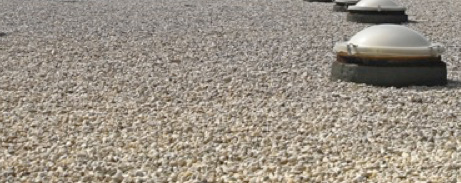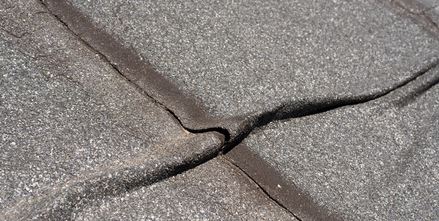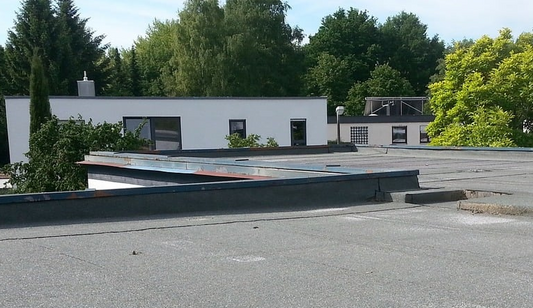Key Points
- EPDM roofing is highly durable, often lasting over 20 years due to its resistance to UV radiation and extreme weather.
- Installation misconceptions are common; proper surface preparation and expertise are crucial for avoiding leaks and premature failures.
- Despite its higher initial cost, EPDM can be more economical over time, potentially lasting up to 50 years with minimal maintenance.
- Regular maintenance, including biannual inspections and prompt repairs, is essential to maximize the lifespan of an EPDM roof.
- EPDM is environmentally friendly, made from recycled materials and contributes to energy efficiency by helping maintain consistent indoor temperatures.
The Truth About EPDM Durability
Although EPDM roofing is touted for its longevity, you should understand exactly what this means for your building.
EPDM, or ethylene propylene diene terpolymer, is a synthetic rubber material renowned for its resistance to weather, including UV radiation and hail. This resilience translates to a lifespan that often exceeds 20 years, a significant advantage when considering roofing options.
However, the durability of your EPDM roof heavily depends on factors such as installation quality and environmental conditions.
You'll find that areas with extreme temperature fluctuations can affect the material's elasticity over time. Additionally, while EPDM is resistant to many types of damage, it isn't invulnerable. For instance, it can be punctured by sharp objects or damaged by the installation of equipment on the roof after the initial installation.
Regular maintenance is key to maximizing the lifespan of your EPDM roof.
This includes routine inspections to check for signs of wear and tear, ensuring that any issues are addressed promptly to prevent minor problems from escalating. You should also keep the roof free from debris, which can accumulate and cause damage over time.
With proper care, your EPDM roof can protect your building effectively for many years.
Installation Misconceptions Uncovered
Many people believe that installing EPDM rubber roofing is straightforward and error-proof, but this isn't always the case.
It's essential to understand that while EPDM installation might seem simple, it requires precision and expertise. You've likely heard that it's a just peel-and-stick job, but there's more complexity to it.
Firstly, the surface preparation is pivotal. Any debris, dust, or moisture can compromise the adhesion of the EPDM membrane to the roof.
So, you'll need to guarantee the roof deck is impeccably clean and dry before starting. It's not just about laying down the material; it's about preparing the base properly to avoid future issues like water infiltration and membrane failure.
Another common misconception is that anyone can do it. True, the process isn't as complex as other roofing systems, but proper installation requires specific skills and tools.
Specialized knowledge in handling and applying adhesives, certifying edge details are sealed right, and managing seams are all pivotal for a durable roofing system.
Improper installation can lead to leaks, increased maintenance costs, and even complete re-roofing sooner than expected.
Debunking Cost Myths
Several common myths suggest that EPDM rubber roofing is excessively expensive, but this isn't necessarily true.
When you're evaluating roofing options, it's vital to look beyond the initial price tag. Yes, the upfront cost of EPDM might be higher compared to some other materials, but the value it offers over its lifespan can make it a more cost-effective choice in the long run.
Consider the durability and longevity of EPDM roofing.
It's designed to resist severe weather, UV rays, and even thermal shock. This means you're not spending extra on repairs or replacements every few years. In fact, an EPDM roof can last up to 50 years with proper installation.
This longevity reduces the overall lifecycle cost substantially, making it an economical option over time.
Furthermore, EPDM's installation process can be more affordable than you think.
It's lighter than many traditional roofing materials and often requires less structural support, which can cut down on installation costs.
Also, its ease of installation means less labor time, which can further reduce expenses.
Maintenance Needs Explained
Understanding the maintenance requirements of EPDM rubber roofing is essential for maximizing its lifespan.
You'll be pleased to know that EPDM is low-maintenance compared to other roofing materials. However, don't think that "low-maintenance" means "no maintenance."
Regular inspections are pivotal. You should check your roof at least twice a year, typically in spring and fall, to confirm it remains in good condition.
During these inspections, focus on cleaning debris from the roof surface, gutters, and drains.
Leaves, twigs, and other materials can accumulate and impede water drainage, potentially leading to pooling and damage over time. Also, keep an eye out for signs of wear or damage such as punctures or shrinkage.
Although EPDM is durable, it isn't invincible.
Minor punctures can be easily repaired with a patch kit specifically designed for EPDM.
For larger issues, you may need to consult a professional.
Certifying the flashing around installations like vents and chimneys is intact is also imperative.
This prevents water from seeping into the layers beneath the roof.
Weather Resistance Facts
EPDM rubber roofing stands out for its exceptional resistance to various weather conditions.
You're likely aware that weather can be the fiercest adversary for any roofing material. However, with EPDM, you've got a robust defender atop your building.
This material withstands extreme temperatures, be it scorching summers or freezing winters, without cracking or drying out. Its resilience extends to dealing with UV radiation and ozone, elements known for degrading many materials over time.
EPDM maintains its integrity and doesn't succumb to the brittleness other roofs might experience under similar stress. You'll find it remains remarkably flexible, which is vital for adapting to building movements caused by temperature fluctuations.
Moreover, EPDM roofs are champions against rain, snow, and ice. Their high resistance to water absorption guarantees long-lasting protection, preventing leaks and water damage that can be costly to repair.
This capability is a game-changer, especially in areas prone to heavy rainfall or snow.
Environmental Benefits Revealed
Beyond its durability, EPDM roofing substantially benefits the environment. You mightn't realize it, but when you choose EPDM, you're opting for a material that's not only long-lasting but also eco-friendly.
This rubber roofing is made from recycled materials, primarily old tires, slate dust, and sawdust, which means you're helping reduce landfill waste.
Moreover, EPDM's production process is more energy-efficient compared to other roofing materials, leading to lower carbon emissions. It's also incredibly lightweight, which reduces fuel consumption during transportation.
You're not just installing a roof; you're part of a larger effort to decrease environmental impact.
This roofing material doesn't stop there. Its dark color and thermal resistance help in maintaining consistent indoor temperatures.
You'll notice your energy bills could drop because your heating and cooling systems won't have to work as hard. This reduction in energy use directly translates to fewer carbon emissions, aligning with global efforts to combat climate change.
Lastly, EPDM roofs are designed for a long service life, over 50 years in many cases.
This longevity means fewer replacements and less material waste over time. You're making a choice that supports sustainability every step of the way.
Rounding Up
You've seen the myths about EPDM rubber roofing, but now you know the truth. It's highly durable, cost-effective, and not nearly as complex to install as you might have thought. Maintenance is straightforward, and its weather resistance is exceptional. Plus, its environmental benefits are undeniable. So, when weighing your roofing options, consider EPDM not just for its performance but also for its positive impact on the planet. It's a choice that's both smart and sustainable.




